Scroll down this link to see the Maths Websites we use in class
to supplement our learning.

![]() Photo Credit: Peter Kirkeskov Rasmussen via Compfight
Photo Credit: Peter Kirkeskov Rasmussen via Compfight
5th Class are learning about angles.
We were using protractors
and learning that a right angle is
ninety degrees.
Teacher thought there would be
a lot of work to do learning about angles.
But it turned out many of the students
knew a great deal about angles already.
This is because of stunts they can do
on their scooters and skateboards.
Cian knows about scooter stunts.
Here is what he said.
The 1080-degree spin is three full rotation.
‘All these stunts are just about possible. It’s all about practice.
Try these stunts over and over again.
Balance and skill will come over time so just keep practising.
It will take a while to master each stunt
but keep setting yourself targets and eventually
you will get there.’
You can see some simple scooter tricks here.
Most importantly Cian says:
‘Be safe. Always wear your helmet, elbow and knee pads’.

Photo Credit: futurestreet via Compfight
An article about Bedtime Maths
Food for thought!
It might be worth trying.
A Party for ‘Smarties’
These parties are great fun,
but students have to work for their reward!
I plan to have mine on Friday at the end of Maths Week
You will need a small box of mini ‘smarties’
(66kcal per box) for each child in the class.
I usually buy two multipacks containing 20 boxes approximately.
I time this lesson for just after the children’s own lunchtime.
It is important to check if any child is allergic to chocolate.
They can have jellies instead perhaps.
Before the children can eat the sweets
they have to do some work.
Here are some suggestions:
You might want to use just SOME of them!
The activities chosen will depend on the age of the children.
General Observation
Look at the box
Can you find the list of ingredients?
How many ingredients are there?
What are they?
Are you surprised by any of the ingredients?
What do you think red cabbage is used for?
What other ingredients give the colours do you think?
What do you think the beeswax does?
Did you know spirulina is a seaweed?
It gives a blue colour.
There is information on the back of the bag
about other natural colouring used.
What percentage of these sweets is milk chocolate?
What percentage is the rest of the ingredients?
Who is the manufacturer of these sweets?
Shape
What shape is it? (cuboid)
How many faces has it? (6)
How many edges? (12)
How many corners? (8)
Open up the box.
What shapes can you find?
How many rectangles are there?
Number
Pour out the contents.
Are the colours of the contents similar to the colours on the box?
How does the size compare?
Estimate the number of sweets in your box.
Now count them.
How close was your estimate?
How many sweets does each child have?
Are there the same number in each box?
Why do you think this happens?
Who had the most sweets in their box?
Who had the least?
Can you work out the average number of sweets in each box?
There are approximately 20 boxes of sweets in each minipack.
Can you estimate how many sweets are in a full minipack?
With a younger class you can practise
adding and taking away using the sweets.
There is also potential for talking about
– tens and units
– and sharing/division.
Data
Count the different colours.
How many colours are there?
How many yellow sweets have you in your box.
How many red? pink? orange? green? purple etc.
Lay them out like a pictogram.

Smarties Graph #3 by Sneeu on Flickr
Which is the most common colour in each child’s box?
Which is the most common colour in all the boxes?
The children can create patterns
and pictures with the contents of their box.
And that’s not all!
Probability
A Lesson on Probability from ehow.com
Fractions
Fractions on primaryresources.co
Language
If your class can resist eating the sweets
for this length of time you can talk about
– the five senses:
sight,
taste,
touch,
sound (of the sweets rattling in the box)
and smell (there isn’t one.. initially at any rate!)
– Words to describe the
sensation of the sweets dissolving
or crunching in the mouth.
texture
taste
Sometimes too there are jokes or riddles
on the back of the box.
Music Potential for work on ‘composition’
using voice and sweets in their box
as a percussion instrument.
Science
You could also talk about
the journey the sweets will make
through the digestive system.
and the job saliva does in the digestion process
How long can you make a sweet last in your mouth?
Mindful of healthy eating concerns
I restrict giving out sweets to twice in the year:
Maths Week when the class earn a ‘Party for ‘Smarties”
as ‘Golden Time’ for hard work and good behaviour.
We will also have a pirate themed treasure hunt
in the Summer term where the ‘treasure’ will be edible.
‘All you need is love,
but a little chocolate now and then doesn’t hurt’.
Charles M. Schulz
First class have asked me for some useful websites
so that they can practise their maths at home, so here we are:
A very popular game for practising addition
and take away tables is called ‘The Balloon Game’.
Click on this link to find it.

![]() Photo Credit: darwin Bell via Compfight
Photo Credit: darwin Bell via Compfight
Another one the children enjoy that helps them
with their learning is Crossing the Swamp .
It is also useful for practising addition and subtraction.
Add Like Mad and its sister site Subtraction Action
are like gymnastics for the brain.
The National Council for Curriculum and Assessment
have a number of videos online
to help parents help their child with maths.
Scroll down to view them here.
First and Second class is a window of opportunity
for learning tables.
Knowing one’s tables is a skill which one will call upon
through out one’s life.
Read about the importance of tables here.
You can find other maths websites for students from 1st-6th class here.

![]() Photo Credit: Widianto Nugroho via Compfight
Photo Credit: Widianto Nugroho via Compfight
‘Crossing the Swamp’ from BBC.co.uk
You also can ‘Add Like Mad’,
try some ‘Subtraction Action’
and practise multiplication

![]() Photo Credit: Judy Baxter via Compfight
Photo Credit: Judy Baxter via Compfight
Simplifying fractions explained from
Six minute video explaining how to simplify fractions
Very comprehensive blog post with lots of ideas
‘Teaching Fractions: Tips, Tricks & Great Websites’

![]() Photo Credit: Mykl Roventine via Compfight
Photo Credit: Mykl Roventine via Compfight
Very simple estimation exercise from Jan Brett.com
Quick fire rounding off game on
‘Which One Rounds?’ from Math Nook
Dart game for rounding off Topmarks.co.uk
Extensive lists on Online Math Learning.com

Photo Credit: Derek Bridges via Compfight
1. Games for revising and learning Times Tables from Maths Games.org
2. Lots of games on Multiplication.com
3. Interactive Times Tables Games from Woodlands-Junior.Kent.sch.uk
4. Tables grid game on BBC.Co.Uk
5. Games on Topmarks.Co.Uk
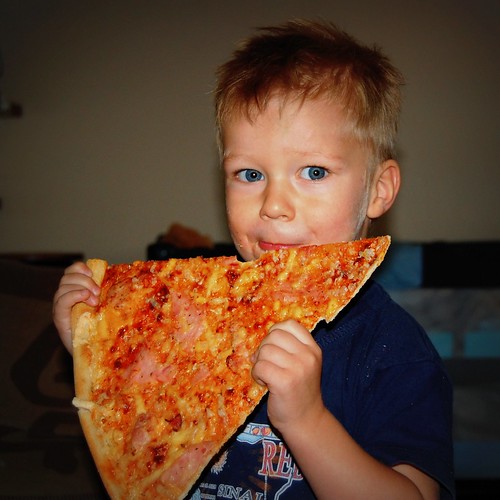
![]() Photo Credit: tomek.pl via Compfight
Photo Credit: tomek.pl via Compfight
1. Graded Resources for Teaching Fractions from www.bgfl.org
2. More from Sheppard Software.com
3. Comprehensive selection of activites
from ‘Who wants pizza?’ by Cynthia Lanius
4. Tony Fraction’s Pizza Shop from MrNussbaum.com
5. Pizza Fractions Game from Soft Schools.com
6. More fraction games from Maths Games.org
7. And if you get tired of pizza …
there are other activities here Classroom.JC-schools.net
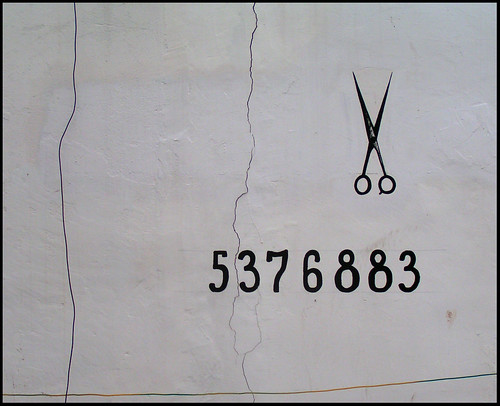
![]() Photo Credit: Tal Bright via Compfight
Photo Credit: Tal Bright via Compfight
1. Resources for the whiteboard from Topmarks.co.uk
2. Learning about Place Value on Kids Math Games Online.com
Games to practice Place Value on
4. Toon University.com (Hundreds, Tens and Units)
5. Toon University again (Thousands, Hundreds, Tens and Units)
and
6. Mr.Nussbaum.com – Place Value Pirates (includes decimals)

![]() Photo Credit: Popupology via Compfight
Photo Credit: Popupology via Compfight
Learning about ratio:
From Soft Schools.com
Games to play:
1. Recognising ratios Ames.Altec.org
2. Ratio Game
4. Finding equal ratios Altec.org
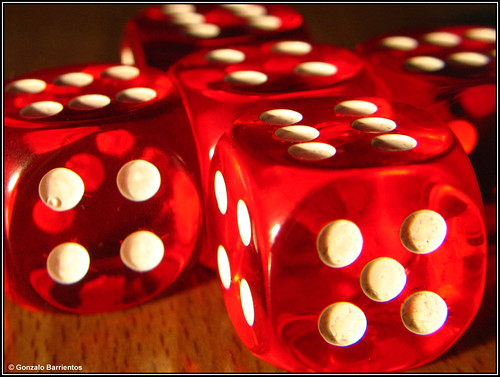
![]() Photo Credit: Gonzalo Barrientos via Compfight
Photo Credit: Gonzalo Barrientos via Compfight
Dear Parent,
A number of parents have asked for more details
than was contained in the end of year report
about how parents can help their child’s learning over the Summer.
I have already posted some suggestions about reading
Suggestions for Children’s Reading Over The Summer
This post relates to Maths.
There will be a third post about using higher order questions
to develop your child’s learning.

![]() Photo Credit: Jimmie via Compfight
Photo Credit: Jimmie via Compfight
The National Council for Curriculum and Assessment
have several short videos for parents
about working on maths with your child.
Short Videos from National Council for Curriculum and Assessment (NCCA)
They appear to be still compiling resources for 3rd/4th class
For Parents of 3rd/4th Classes – National Council for Curriculum and Assessment
This post relates specifically to
students in 2nd Class going into 3rd.
It is a long post and you will find
the contents will help you
over the next school year.
In many reports I wrote that;
‘3rd+4th Class is the window of opportunity
for learning multiplication+division tables.
They are easier to learn than
the addition/subtraction tables from this year
because of the number patterns apparent in them.
Prioritizing these tables next year will
give your child a very useful life skill.
Tables are gymnastics for the brain.
Knowing them well is confidence building
and allows your child to concentrate on methodology’.
Multiplication is introduced as repeated addition.
Towards the end of 2nd class, we did this in class.
You may find the following websites helpful.
The two introductory videos here are useful;
Teach the Times Tables on Multiplication.com
This is a useful follow up game;
Carl’s Cookie Capers from Multiplication.com
The Balloon Popping Game from the School Hub
with which your child is very familiar will also be helpful.
Other online games that practice multiplication can be found here;
Multiplication Games from ICT Games.com
It may be that your child finds it hard to learn by rote.
So you may find this site useful;
Strategies for Learning Multiplication Facts from Olc.spsd.sk.ca
This game also provides some gymnastics for the brain;
http://members.learningplanet.com/act/count/free.asp
Problem Solving is a skill that all students would benefit from practising.
I suggest an inexpensive purchase Mad 4 Maths – 3rd Class
To start with your child could do a few of these with you
perhaps using the 3-step strategy highlighted below.
Once they master these steps they can continue on, independently.
How can you help your child with problem solving in Maths?
Problem Solving:
The following strategies are useful in relation to problem solving
• Discussing the problem
• Rephrasing to make the meaning clearer
• Using concrete materials where possible
• Using smaller numbers
• Setting out problem on paper using diagrams, drawings etc.
• Estimating
Some teachers use the mnemonic RUDE
to remind the children of problem solving strategies.
So the children are encouraged to
Read,
Underline key words,
Draw,
Estimate (Answer).
This is the simplest approach.
‘Drawing’ the problem can be very effective.
It gives the child time to think and process the information.
Another approach is
We LUV 2 C word stories!
Look,
Underline (the key word),
Visualise(draw),
Calculate and
Check.
In tandem with these approaches you could ask your child:
1. What do I have? (what info is given?)
2. What do I want to have at the end? (What am I being asked to do?)
3. How do I get there? (add/subtract/multiply/divide or a combination)
The additional website may be useful for some.
It teaches a visual strategy for problem solving:
Problem Solving with Thinking Blocks

Photo Credit: gfpeck via Compfight
I have checked out all these websites,
but please supervise your child online.

Photo Credit: futurestreet via Compfight
An article about Bedtime Maths
Food for thought!
It might be worth trying.
Literacy
I hope to get a lot of use out of this magical,
inspirational and innovative website next year.
These are other useful websites for literacy
and contain online books to listen to and to read.
Picture books:
A number of stories about a dinosaur
Short stories on Learn English Kids British Council
CBeebies: Picture Stories for Infant Classes
Animated books (no reading involved!
Would be good for oral comprehension
perhaps to end of First Class) @ We do listen
Comprehension will be a focus of this school year.
Inference is a useful skill.
Here are fifteen riddles that require the student to infer:
http://www.philtulga.com/Riddles.html
Prediction is another skill which assists comprehension.
This visual puzzle gives students the opportunity to predict.
http://www.philtulga.com/Prediction.html
You will see that the excellent website
from which these two activities come from
has all sorts of other original ideas for
the teaching of reading, maths, science and music.
Maths
This is a good site for literacy and maths:
Sumdog comes highly recommended for learning maths.
One has to register to join.
One has to register to get the best from this site too.
The content is cross curricular but this is a maths index for children aged 7-9
These are the strategies we are learning
to speed up our understanding of this computation.
Strategies for Learning Tables
The following is a site where the children can practice
computation, which tracks individual progress
Problem Solving
Recently in school we talked very briefly about this problem.
Perhaps the children would like to experiment with solutions at home:
Pokemon
For fans of Pokemon:
This activity involves reading, comprehension and decision making:
A Pokemon Adventure from Woodlands Junior Kent
The Arts
Here are some useful suggestions for integrating art and drama:
Games that integrate art and drama
These ideas are from a great art blog that I discovered recently
The author is a specialist art teacher, teaching at primary level in the US.
The standard she is reaching with the children is exceptional.
Reading quickly through her philosophy it appears that she would prefer
five fully finished masterpieces from a child over a year
rather than a weekly unfinished one.
Included in this blog are a series of short videos (on Vimeo)
for use in class.
‘White Spot Inspector’ is an inventive approach
to getting the children not to leave spaces in the picture unfinished.
Other videos include advice about
sketching lightly with a pencil instead of digging down onto the page,
being kind to paintbrushes and glue pots,
concentrating,
being neat,
avoiding careless brushwork
and using black marker to tidy up untidy paintwork.
There is also one on craftmanship i.e. touching up your work, ‘redrafting’ etc.
Index of Instructional Art Videos
There is also a link to an extensive archive of artwork.
I would be doing this wonderful blogger a disservice
if I didn’t mention that she also uses a lot of IT in her work.
This is presently beyond me, but it is something to be inspired by and to aspire to.
25th August 2012:
I have been adding to this post all summer.
As a result it seems to contain everything but the kitchen sink.
Here are some more!
They are classroom tools for timing/counting down and picking names:
Fruit Machine Word or Name Picker
Add Like Mad was a very popular game in 2nd Class, Room 6.
We have been playing it on the Interactive Whiteboard.
Here is the link if any of the children would like to try it at home.
This is a picture of a family of owls that Jessica did 🙂
I came across these articles online
and thought they makes a great case
for the importance of learning tables.
WHY SHOULD MY CHILD LEARN THEIR TABLES
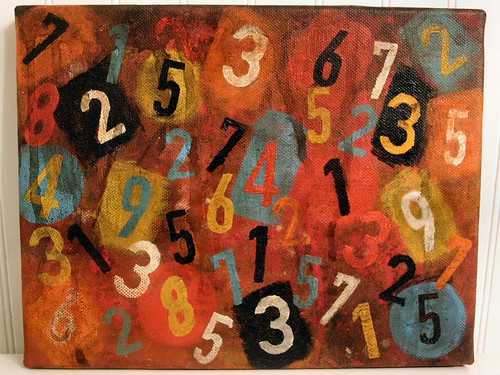
![]() Photo Credit: Heather aka Molly via Compfight
Photo Credit: Heather aka Molly via Compfight
We don’t learn ‘times’ tables until third class,
but what is said about them here also applies to
addition and subtraction tables:
WHY LEARNING TABLES IS IMPORTANT
If you have an older child who is
learning multiplication or division tables,
this site might be useful
HOW TO LEARN A TIMES TABLE IN A WEEK
I am filing it here for future reference.
It might come in useful to your child
in Third Class next year.
I also thought the following articles fascinating
and ‘food for thought’.
US STUDY: PARENTS ARE ASKED FOR THEIR OPINIONS ON LEARNING TABLES
THE IMPORTANCE OF MEMORIZING TABLES
How Parents Can Help Their Child Memorize the Times Tables
The Importance of Learning Tables
Tables are a basic essential for when learning mathematics.
Children need to master them.
Unless they do this…
it will be difficult for the children to learn other aspects of maths.

Photo Credit: woodleywonderworks via Compfight
Addition and Take Away Tables
are taught in 1st and 2nd class.
In this school tables to 6 are taught in 1st.
The class teacher revises these in 2nd
and then the children continue to learn
tables up to adding and taking away 12.
Multiplication/Division are taught in 3rd and 4th.
Regular revision of tables is part of the
5th and 6th class programme.
1st/2nd Class provide ‘a window of opportunity’
to learn addition/subtraction tables.
It is important to master these tables
by the end of 2nd because
• in 3rd and 4th the focus changes to multiplication and division.
• if a child knows their simple number facts
then they can give their full attention to methodology when being
taught new maths
If the children have the answers to the tables
at the tip of their tongue then they can concentrate
on learning the methodogy of new sums.
The children who know their number facts speed
through the maths worksheets in class.
Teachers can teach the tables, but
children really need to learn them.
Tables are regularly given as homework.
Sometimes children think that homework
of a ‘learning off’ type is less important
than written homework.
But learning tables is very important.
Teachers in 5th and 6th find they are
teaching tables that should have been
learnt in 3rd and 4th.
Teachers in 3rd and 4th
find themselves teaching addition
and take away tables to a number of their class.
Learning tables needn’t be done at the kitchen table.
You can work on them with your child on the journey
to and from school
or while waiting in the supermarket queue!
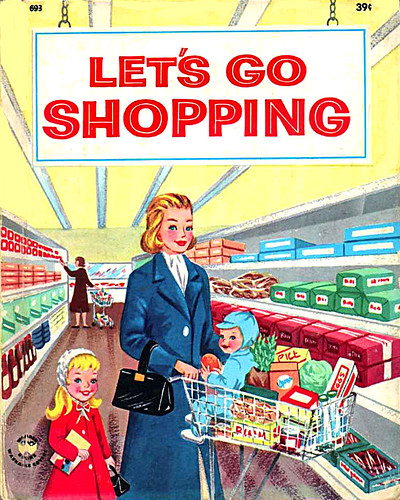
![]() Photo Credit: James Vaughan via Compfight
Photo Credit: James Vaughan via Compfight
Knowing tables really helps when
children are learning new sums.
Children need to be able to rattle off
their tables like they know their own name.
Otherwise, though they understand
how to do a sum, they may make mistakes
in simple addition or take away.
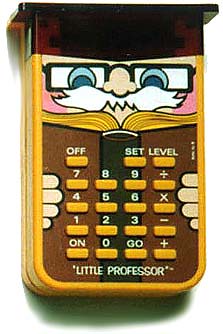
![]() Photo Credit: draggin via Compfight
Photo Credit: draggin via Compfight
Why not use a calculator?
Children can become over reliant on calculators.
They don’t develop estimating skills.
Keying in the wrong number can happen.
But because the student hasn’t developed estimating skills
they are then unaware when a particular answer is unlikely.
Failing to learn tables makes learning more complicated maths,
more difficult than it need to be.
If a child can automatically knows the answer
to a table then more difficult maths will be less challenging.
Teachers are finding that children think
they don’t understand a sum when
all that is happening is that they are
making simple mistakes in addition,
subtraction, multiplication or division.
This can be discouraging for the child.
Losing confidence in their ability can be demotivating.
Children may view themselves as someone
who doesn’t understand maths,
when in reality it is that they don’t know their tables.
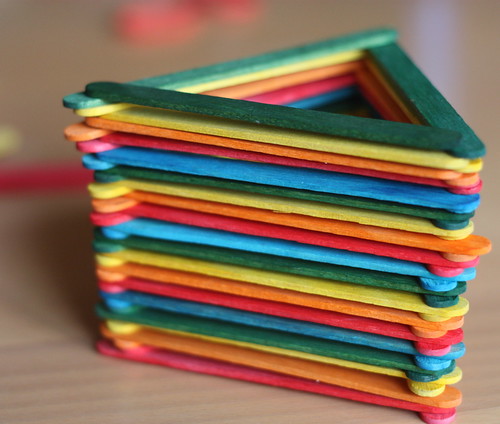
![]() Photo Credit: Juliette Culver via Compfight
Photo Credit: Juliette Culver via Compfight
Ways of learning
In 1st and 2nd Class we practise tables,
in a concrete way, using lollipop sticks and unifix cubes.
We also use the table book.
In school we use Joyce O’Hara’s Addition and Subtraction CD
from Ashton Productions
In class we say ‘one and zero make one’,
one and one make two’…’one from six leaves five’.
In this way we use the same language as this cd.
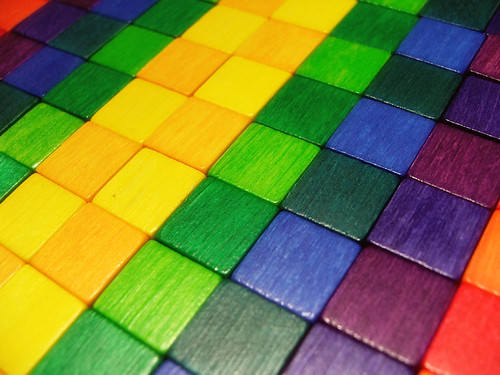
![]() Photo Credit: Alice via Compfight
Photo Credit: Alice via Compfight
Children learn in different ways.
Many respond to working with concrete objects;
lollipop sticks, cubes, smarties.
Some children learn best by singing or chanting the table.
For some, keeping track of their tables on their fingers
(a kinaesthetic approach) helps.
Towards of 2nd class multiplication is introduced
as repeated addition.
In class the children learn about number patterns
and learn to count in 2s, 4s, 5s,etc., using the hundred square.
You may find these lively online videos from
Havefunteaching.com helpful
for learning number patterns.
Children REALLY need to know their tables!
As is mentioned on the coolmaths4kids site
WHY LEARNING TABLES IS IMPORTANT
among the concepts in primary school maths
which children find challenging are long division and fractions.
In a typical long division sum, a child will need to
divide, multiply and subtract several times.
Working with fractions also need the ability
to add, subtract, multiply and divide.
Without knowing their tables, children will find this very hard.
From THE IMPORTANCE OF MEMORIZING TABLES
How Parents Can Help Their Child Memorize the Times Tables
– Let your children see, that you place value on learning tables
and that you think tables are important.
– Show your child how quickly an answer should be arrived at!
– Find out what your child already knows. Once again the following
game is useful for checking tables.
-Focus on what they need to learn.
Involve your child in setting goals.
Monitor progress.
– Spending quality time together practicing.
Praise and encouragement are all motivating for your child.
Have fun!
Problems written by the whole class
and by some individual children from the class also:
1. Nine fat sausages frying in a pan.
One went pop and the other went bang!
So how many fat sausages were left?
2. Nine aliens in a spaceship.
One fell out the door.
How many were left? (Conor wrote this!)
3. Ciara was walking nine puppies in the park.
Six went right and two went left.
How many were left? (This one is by Kate.)
4. The Seven Dwarfs were working in the mine.
Sleepy fell asleep and Grumpy went home in a huff.
How many dwarfs were left?
5. Destiny, the Pop Star Fairy,
Mia the Bridesmaid Fairy
and Summer, the Holiday Fairy
all went to the Talent Show,
but Destiny lost her voice
and was sent home by the judges.
How many fairy performers were left? (by Riona)
6. Tasha the Tap Dance Fairy,
Alice the Tennis Fairy
and Jessica the Jazz Fairy all lived in America.
They all flew over to England to go to the X Factor.
Jessica lost track of time and missed her flight.
How many singers were left. (by Nadine)
7. Five Roman soldiers went to war.
Two were injured.
How many were left? (by Maks)
8. Ten Smurfs are in a village.
Three got taken by Gargamel.
How many are left? (by Patrick)
PROBLEM SOLVING
These problems were written by 2nd as a whole class activity over a few days. We turned the number facts they were learning in tables into problems to be solved.
Over the next few weeks the children will be doing this for homework. I will collect the best ones and then get the children to turn the problems back into number sentences.
Writing these short problems integrates with literacy also.
2-2=0
Jack and Jill went up the hill to fetch a pail of water. Jack fell down and broke his crown and Jill came tumbling after. How many children were left up the hill?
10-2=8
Emily had a party. She invited 7 girls from Room 6 and John and Edward Grimes.
Jedward had to leave early because they had to spike their hair!
How many people were left at the party?
12-3=9
The Three Billy Goats Gruff,
the Three Blind Mice,
the Three Bears
and the Three Little Pigs
all went ice skating in Storybook Land. The Three Blind Mice found it so tricky, they went home. How many animals were left?
3 + 3 + 3 + 3 = 12 animals were ice skating
-3 went home
12 – 3 = 9
How many legs have these 12 animals altogether?
How many ice skates?
How many ears? How many tails?
8-4=4
Eight children went to the playcentre in Zoom. Half of them bumped their heads and went home. How many children were left?
10-4=6
When Teacher was little she had a packet of ten crayons. She ate four of them. How many crayons were left?
Luke’s “Self Portrait”. Well done Luke!
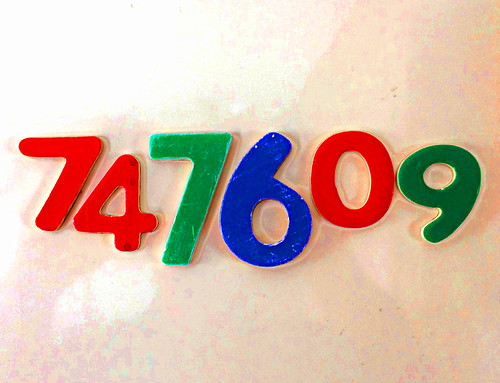
![]() Bill Smith via Compfight
Bill Smith via Compfight
Here are some of our favourite games
for learning maths
This one is called Number Eaters.
It helps us learn our addition tables
and it is fun to play.
1. CLICK HERE FOR NUMBER EATERS
There are lots of other maths games on this site.
If Numbereaters is’nt for you why not try
3. BALLOON POPPING GAME FOR ADDING AND TAKING AWAY from earlier in the term
is also good.
4. Don’t forget the ‘Crossing The Swamp’ game also from earlier this year.
5. If you get tired of popping balloons you could try this one
6. THIS ADDING GAME IS BASED ON THE TV SHOW ‘WHO WANTS TO BE A MILLIONAIRE?’
7. In 2nd class we also learn about halving numbers and doubling them. This game is good practice
First and second class provide a window of opportunity to learn addition and subtraction tables. Second class is a fresh opportunity for the children to learn these tables. In the main, I found the children have learned tables to 5 very well. These will be revised and then there will be another chance to learn to later tables to ten . It is important to master these tables by the end of second because
• In third and fourth the focus changes to multiplication and division.
• If a child knows their simple number facts they can more or less their full attention to method when being taught new maths e.g. ‘renaming’ when subtracting two digit numbers.
Ways of learning
In school we practise these tables, in a concrete way, using lollipop sticks and unifix cubes from the Number Bags on our desks. We have been singing the tables along to music. Hopefully the children have shown you how we use our hands to keep us on track while saying the table. We also use the table book.
In school we use Joyce O’Hara’s Addition and Subtraction CD from
SEE THIS LINK FOR THE JOYCE O’HARA CD FROM ASHTON PRODUCTIONS
We say ‘one and zero make one’, one and one make two’
‘one from six leaves five’. In this way we use the same language as this cd.
Children learn in different ways. Many respond to working with concrete objects; lollipop sticks, cubes, smarties. Some children really pick up on singing or chanting the table. For some keeping track of their tables on their fingers (a kinaesthetic approach) helps.
If you feel your child is not getting enough homework
Some of you may find that replacing the written maths the children used do with learning a table makes for less homework. But remember the few days or so it will be a case of adding and subtracting one and two. This will be quite easy. The tables will get harder after that.
If you do want to do extra work with your child you could rewrite some number facts from the tables as problems. We are told that children find problem solving difficult in maths. This may sound difficult, but can take as simple a form as ‘I had two pancakes on my plate. Mum made one more. How many had I then?’
Many of the children are very taken with the idea of learning how to multiply. We are in second class and as I say multiplication is on the curriculum for third.
Between now and Christmas we will be doing a ‘blitz’ on addition and take away tables. For this reason these tables are the only maths homework we are going to do in the next month. Instead we will do the exercises in the Mental Maths workbook in during class.
But time is ticking on and in second class multiplication is taught as repeated addition. In class we will be learning about number patterns and learning to count in 2s,4s,5s,etc. and using the hundred square.
I found these lively videos to help us:
!!!!!!!!!!!!!!!!!!!!!!!!!!!!!!!!!!!!!!!!!!!!!!!!!!!!!!!!!!!!!!!!!!!!!!!!!!!!!!!!!!!!!!!!!!!!!!!!!!!!!!!!!!!!!!!!!!!
VIDEOS TEACHING NUMBER PATTERNS FROM HAVEFUNTEACHING.COM
!!!!!!!!!!!!!!!!!!!!!!!!!!!!!!!!!!!!!!!!!!!!!!!!!!!!!!!!!!!!!!!!!!!!!!!!!!!!!!!!!!!!!!!!!!!!!!!!!!!!!!!!!!!!!!!!!!!
We will also use this Counting Rap to help us:
Counting Cadence
Based on the Counting Cadence song from
the Dr. Jean Feldman Kiss Your Brain CD
We’re the best, we’re number one.
Now let’s have some counting fun.
1 2 3 4 5 6 7 8 9 10 11 12
We are smart, we’re really cool.
Come on and let’s count by twos.
2 4 6 8 10 12 14 16 18 20 22 24
We are rockin’ you can see.
All together count by threes.
3 6 9 12 15 18 21 24 27 30 33 36
We’ve got the beat&we know more.
Everybody count by fours.
4 8 12 16 20 24 28 32 36 40 44 48
We can count and we’re alive.
Now let’s try and count by fives.
5 10 15 20 25 30 35 40 45 50 55 60
Skip counting is a kick.
You can do it-count by six.6 12 18 24 30 36 42 48 54 60 66 72
We’re on a roll-our brains are revvin’. Everybody count by seven.
7 14 21 28 35 42 49 56 63 70 77 84
We’re fantastic-doing great.
Come on now and count by eight.
8 16 24 32 40 48 56 64 72 80 88 96
Lookin’ good and counting fine.
Now it’s time to count by nine.
9 18 27 36 45 54 63 72 81 90 99 108
Skip count, skip count once again.
One more time and count by ten.
10 20 30 40 50 60 70 80 90 100 110 120
We are super, yes we are. Look out world, here comes a star!
Maths – simple computation: addition/subtraction in Second Class
If you feel the need to supplement homework, these are some suggestions.
Learning simple computation (addition/subtraction tables to 10+10) really benefits the student in second class. Because when they go on to learn how to add tens and units with renaming they can concentrate on this new methodology because the addition and subtraction come easy to them.
We will be doing this in class. These websites may help you help your child.
The first is an addition speed test.
http://www.mrmyers.org/Math_Mania/ttadd.html
http://www.ohio-distinctive.com/toybox/mathbarge/mathbarge.html
In preparation for adding tens and units with renaming, this game might be useful.
http://www.ictgames.com/sharknumbers.html
This is a good site for practicing number facts and computation:
Finally this site has games that practice addition and take aways at speed.
Finally following a recent recommendation I will be using the following site in class.
Problem Solving with Thinking Blocks
The Thinking Blocks website teaches a visual strategy for problem solving.
Hope you find these helpful.
Teacher